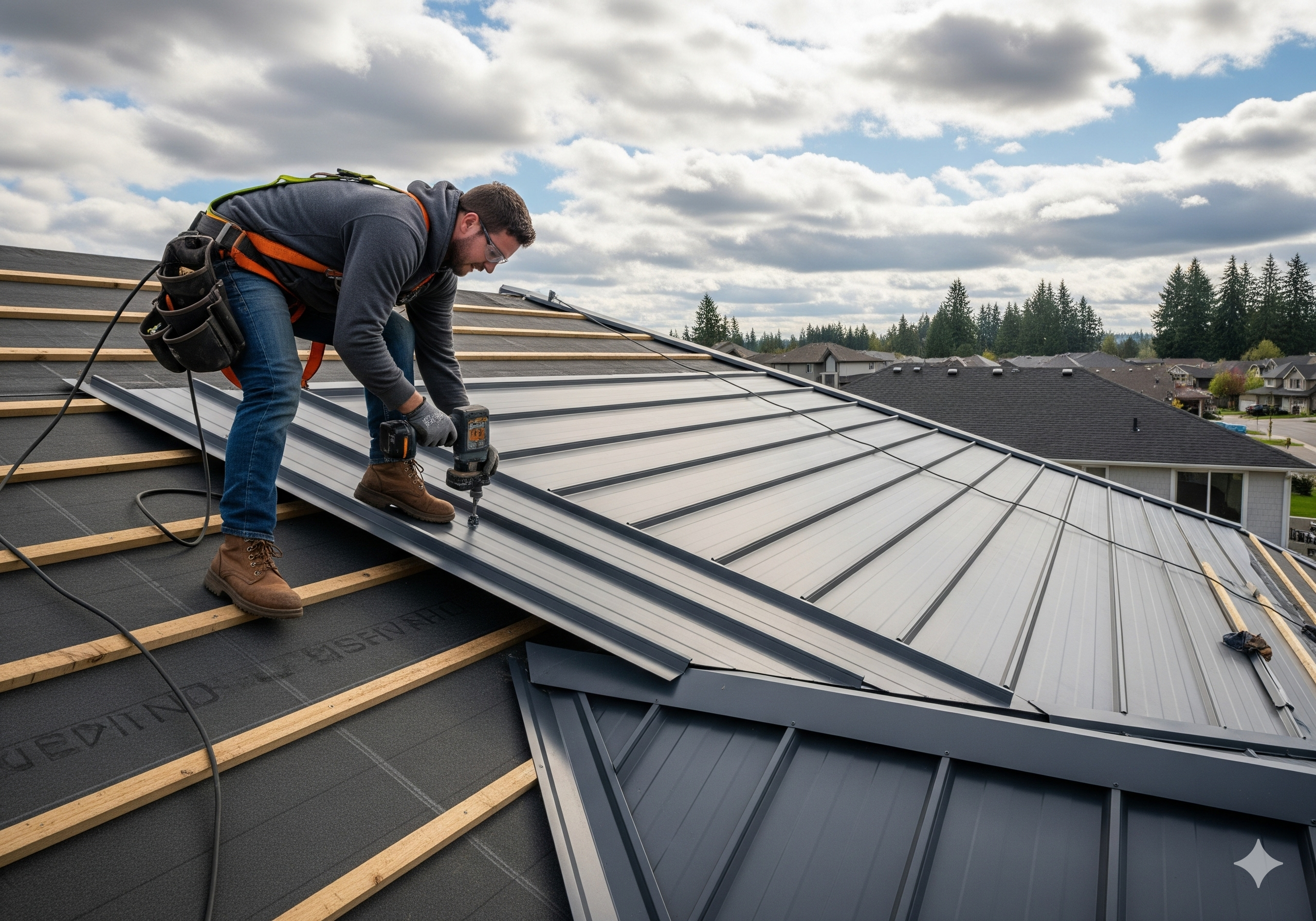Learning how to install a metal roof requires careful planning and proper preparation. This process involves selecting the right materials, inspecting your roof structure, and understanding local building codes and regulations. A local roofing company can help guide you through these important steps if you need professional assistance. The installation demands specific tools, safety measures, and knowledge of weather factors that affect your roof’s performance. This guide covers the key points you need to know for a successful metal roofing project.
Roofing Materials Selection
Choosing the right materials for your metal roof affects how long it will last and how well it performs. Steel, aluminum, and copper are popular options that resist rust and need little upkeep. These materials also reflect heat, which can lower your cooling costs during hot weather. Pick a style and color that matches your home’s appearance and fits your budget. Quality materials may cost more upfront, but they save money over time through improved durability and performance. How to install a metal roof successfully starts with selecting materials that work well in your local climate and meet your needs.
Roof Structure Assessment
Your roof must be strong enough to hold the weight of metal roofing materials. Check the current roof deck for any weak spots, rot, or damage that needs fixing. Make sure all boards are properly attached to the support beams underneath. Look for sagging areas that might indicate structural problems requiring repair before installation. A solid foundation prevents future issues and helps your new metal roof perform well for years to come.
Weather and Climate Factors
Your local weather conditions determine which metal roofing system works best for your home. Areas with heavy snow need steeper roof angles to prevent snow buildup and potential damage. Regions with strong winds require special fasteners and installation methods to keep panels secure. Hot, sunny climates benefit from reflective coatings that reduce heat absorption. Cold areas require materials that can withstand temperature fluctuations without cracking or becoming brittle.
Installation Techniques and Tools
Proper installation methods and the right tools make the difference between a successful project and costly problems later.
- Proper Fastening Methods: Use the correct screws or nails to attach metal panels securely to your roof deck.
- Seam Sealing: Seal all panel connections properly to prevent water leaks and improve roof durability.
- Flashing Installation: Install flashing around chimneys, vents, and other roof openings to create watertight seals.
- Use of Specialized Tools: Get tools like metal shears, seaming pliers, and panel lifts to make installation easier and more precise.
Safety Precautions and Regulations
Safe installation practices protect you and your team from accidents and injuries. Wear proper safety gear, including hard hats, gloves, and non-slip shoes, at all times. Set up ladders and scaffolding correctly to prevent falls, and check local building codes before starting work. Hold regular safety meetings to discuss potential hazards and how to avoid them. Following safety rules and regulations helps keep everyone safe and helps you avoid potential legal problems.
Maintenance and Longevity Tips
Regular care keeps your metal roof working well for decades and protects your investment.
- Inspection Routine: Check your roof twice yearly for loose panels, rust spots, or debris buildup that could cause problems.
- Cleaning Schedule: Remove leaves, dirt, and other debris regularly to prevent water damage and maintain proper drainage.
- Gutter Maintenance: Keep gutters clear so water flows away from your roof instead of backing up under the panels.
- Professional Inspections: Have a roofing expert check your roof annually to catch small problems before they become expensive repairs.
Related Topics:

